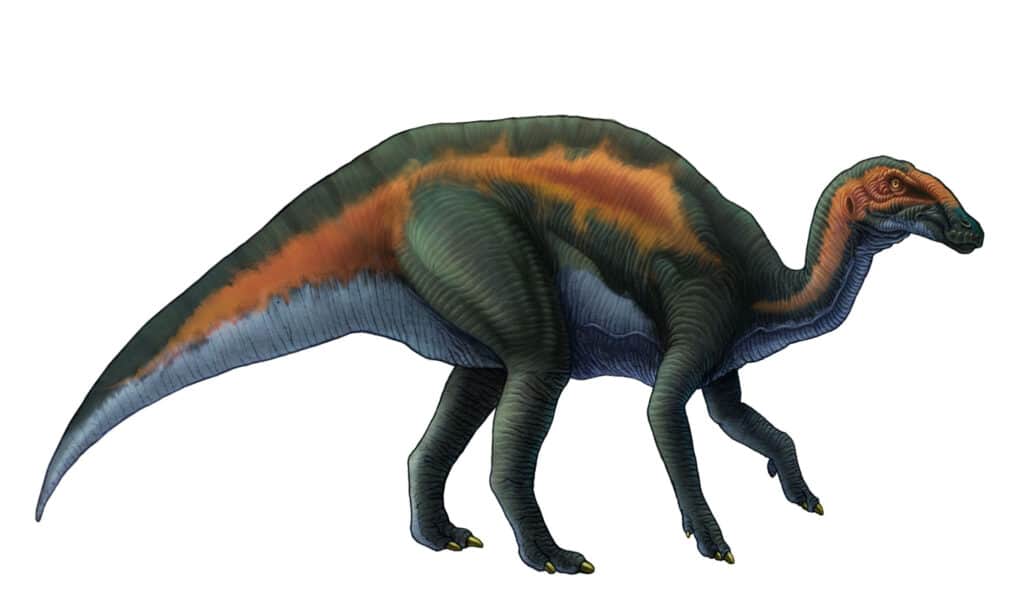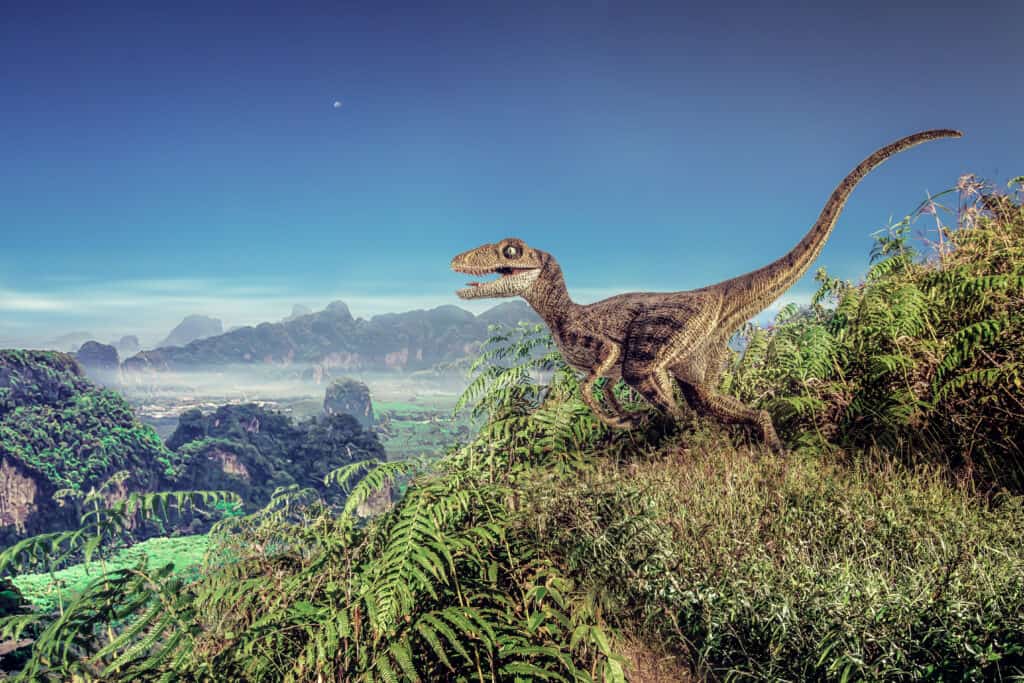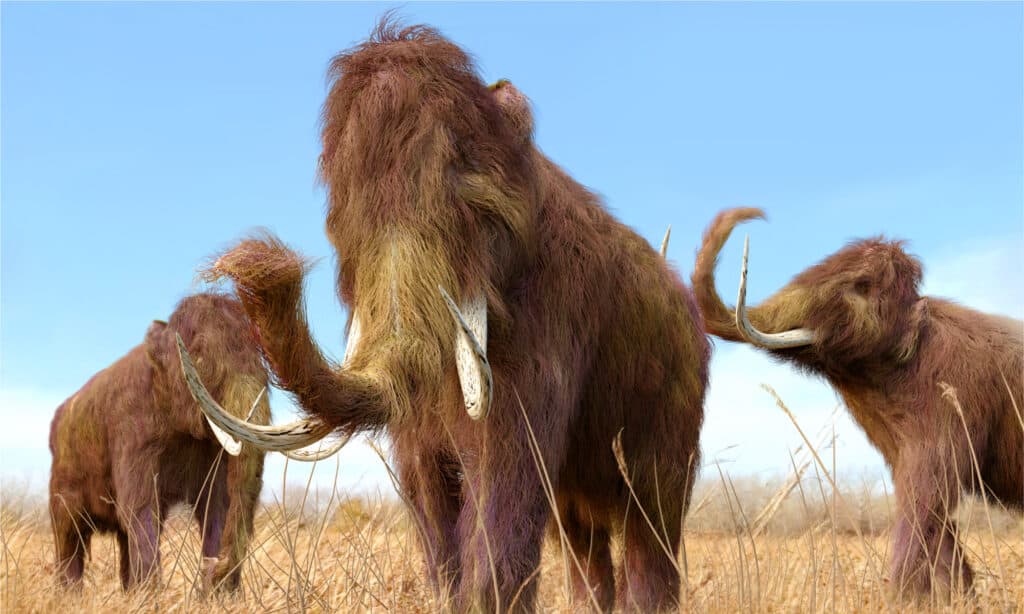Several million years ago, dinosaurs walked the earth. Many of them lived in parts of the present-day United States, and in some places, their fossils were preserved in good condition for paleontologists to study. Studying these preserved bones gives scientists a good idea of what these locations might have looked like in the prehistoric past. But while dinosaur bones can be found across many states in America, there are a few exceptions. In South Carolina, for instance, the geologic record about dinosaurs has been blank. This means even if dinosaurs lived in South Carolina, scientists don’t have conclusive evidence to identify them.
The Palmetto State has a rich and extensive fossil record. Several marine invertebrates, fishes, whales, and reptiles have been found. Fossils of large mammals have been discovered as well. However, as far as dinosaurs that lived in South Carolina are concerned, scientists don’t have a lot of information. This post details some interesting things to know about the prehistoric giants that lived in the state and where to find their fossils.

Did Dinosaurs Live In South Carolina?
About 32 dinosaur fossils have been found in South Carolina so far. This pales in comparison to other locations with abundant fossil records. In California, for instance, the official count of dinosaurs found so far is close to 2,000.
The scarcity of fossils notwithstanding, the fact that there are fossils at all means some dinosaurs did live in South Carolina. However, their bones were not preserved because the state was underwater for most of the Triassic and Jurassic Periods when dinosaurs were abundant. The region was partially dry throughout the Cretaceous Period, and experts believe dinosaurs probably inhabited this area during this period.
Unfortunately, the science of fossil formation is a complex one. The combination of conditions required for fossils to form doesn’t occur everywhere in nature. South Carolina is one such place where prehistoric terrestrial animals didn’t leave a lot of evidence behind. So far, paleontologists have only found a few scattered fossils. The incomplete nature of these fossils makes it challenging to identify the animals that left them accurately.
Dinosaurs That Lived in South Carolina
South Carolina has a relatively rich paleontological history with a few significant discoveries. However, many of the fossils found so far are for other animals apart from dinosaurs. For dinosaurs that lived in South Carolina, the earliest fossils date back to the Cretaceous Period when the shallow ocean that covered most of the state had dried up.
In the early and mid-1990s, paleontologists unearthed the first dinosaur fossil in South Carolina. They found the bone fragment at a location near Kingstree in Williamsburg County. This was just the beginning of many fossil finds in the state. Paleontologists have not found any complete dinosaur fossils so far, but they have found bone fragments such as two hadrosaur teeth and a raptor toe bone. Paleontologists have found fragments of other unidentifiable dinosaur bones that may have lived in South Carolina. Based on these bones, we now know that the following groups of dinosaurs may have lived in South Carolina.
1. Hadrosaur
In 1986, paleontologists found two hadrosaur teeth fossils in South Carolina. They were a group of herbivorous dinosaurs that lived during the Cretaceous Period (between 75 and 65 million years ago). This family of dinosaurs, often known as “duckbilled dinosaurs,” were abundant in Europe, Asia, and North America.
Hadrosaurs were massive gentle giants. They weighed between 1.5 and three tons and were nearly 30 feet long. Yet, these dinosaurs were herbivores that fed on vegetation instead of other animals. Their duck-like bills and toothless beaks were some of their defining features. They used these to grind plant materials. Many species had crests on their skull.
Hadrosaurids lived in herds and used their strong hind legs and tails to move and balance while feeding. Scientists think they lived close to water bodies where food was abundant, but they were entirely terrestrial. Scientists know a lot about the anatomy and possible habits of this family of dinosaurs because they are often well-preserved in fossil records. Unfortunately, this is not the case in South Carolina, where they have not found any dinosaur fossils so far.

Hadrosaurs were massive gentle giants that weighed between 1.5 and three tons and were nearly 30 feet long.
©Bee_acg/Shutterstock.com
2. Dromaeosauridae
Paleontologists unearthed parts of a meat-eating dinosaur in Quinby, Florence County, between 1992 and 1994. It was a 1.5-inch tooth which they later identified as the tooth of a dromaeosaurid dinosaur. A claw core, toe bone, and serrated teeth were also discovered in the Pee Dee River near Florence in 1994.
Dinosaurs in the family Dromaeosauridae lived from the mid-Jurassic Period through the Cretaceous-Paleogene extinction event. Velociraptors, Deinonychus, and dromaeosaurs were all members of the dromaeosaurid family. Some dromaeosaurids, such as Deinonychus and Utahraptor, were among the largest members of the group, while others, such as Microraptor, were among the smallest.
The dinosaurs were small, fast runners known to be very intelligent and deadly. Dromaeosaurid dinosaurs were small to medium-sized, growing to a massive size of up to 20 feet. However, most of them were between 4.9 and 6.8 feet in length. Dromaeosaurids, like other theropods, were bipedal (walking on their hind limbs). Their forelimbs were modified to form slashing talons, while a stiffened tail helped to balance their weight.

s were among the smallest of the dinosaurs in the family Dromaeosauridae.
©iStock.com/MR1805
3. Velociraptor
One of the dromaeosaurid dinosaurs identified in South Carolina is the Velociraptor. Scientists think the claw of the theropod dinosaur found in the Pee Dee River in 1994 belonged to a member of this genus.
Velociraptors existed during the Cretaceous Period, beginning from the Upper Cretaceous Period to about 66 million years ago. It was a meat-eating dinosaur that attacked smaller dinosaurs and other animals with its long, sickle-shaped claws and curved razor-sharp teeth.
This dinosaur is thought to have been the size of a wolf, growing to be 20 inches tall at the hips and six feet long. The Velociraptor had an average body mass of about 33 and 40 pounds. Although it could not fly, the Velociraptor had feathers on its body. It is one of the most publicly recognized dinosaurs following its depiction in the Jurassic Park movies.

The
Velociraptorattacked smaller dinosaurs and other animals with its long, sickle-shaped claws and curved razor-sharp teeth.
©kamomeen/Shutterstock.com
Where To Find Fossils of Dinosaurs That Lived in South Carolina
Although not-so-impressive as far as dinosaur finds are concerned, South Carolina is well-known for its fascinating fossil finds. The woolly mammoth, one of the first fossils discovered in the United States back in 1725, was found in South Carolina. This indicates that the huge elephant-like animal that existed roughly 10,000 years ago lived in South Carolina. There have been numerous other fascinating prehistoric animals, including the saber-toothed cat, giant whales, crocodiles, and alligators.

The woolly mammoth, one of the first fossils discovered in the United States back in 1725, was found in South Carolina.
©Aunt Spray/Shutterstock.com
Many dinosaur fossils from South Carolina and its neighboring areas are now housed in museums and research institutions, where they can be viewed or studied. Some museums and research institutes in South Carolina that have dinosaur fossils on display include:
The South Carolina State Museum
This is the largest museum in South Carolina. The newly rebuilt and expanded South Carolina State Museum offers visitors a unique, engaging educational experience. It contains an extensive paleontology collection, including 70 million-year-old bones of prehistoric dinosaurs that lived in South Carolina. The State Museum is housed in its greatest relic, an 1894 textile mill in downtown Columbia’s Congaree Vista.
The South Carolina Institute of Archaeology and Anthropology
This research institute within the University of South Carolina focuses on the anthropology and archaeology of South Carolina and its neighboring areas. Dinosaur fossils from the South Carolina Institute of Archaeology and Anthropology (SCIAA) collection are used in research and education. The fossils, however, are not available for public viewing. The institute also provides information and resources on dinosaurs that lived in South Carolina.
Bob Campbell Geology Museum
The Bob Campbell Geology Museum at Clemson University in South Carolina houses a collection of fossil specimens from South Carolina and other regions of the world. The museum features educational exhibits about dinosaur fossils. The museum houses a complete skull of Tyrannosaurus rex, the most well-known and terrifying of all dinosaurs. The Calhoun Critical Zone Observatory at Clemson University has also produced several dinosaur fossils displayed in the Bob Campbell Geology Museum.
College of Charleston
The Mace Brown Museum of Natural History at the College houses a collection of dinosaur fossil specimens open to the public. The Paleontology Museum at the College of Charleston, South Carolina’s Department of Geology and Environmental Geosciences, also houses almost 1,000 fossils, including some dinosaur bones.
Summary of 3 Dinosaurs That Lived in South Carolina
| Number | Dinosaurs |
|---|---|
| 1 | Hadrosaur |
| 2 | Dromaeosauridae |
| 3 | Velociraptor |
The photo featured at the top of this post is © Dotted Yeti/Shutterstock.com
Sources
- The Barrister, Available here: https://lawlibrarybarrister.wordpress.com/2022/02/02/jurassic-law-south-carolinas-paleontology-and-its-connection-with-the-legal-field-federal-laws-regarding-paleontology
- Count on News 2, Available here: https://www.counton2.com/news/see-how-many-dinosaur-fossils-are-in-south-carolina
- ThoughtCo., Available here: https://www.thoughtco.com/dinosaurs-and-prehistoric-animals-south-carolina-1092099
- Discover South Carolina, Available here: https://discoversouthcarolina.com/articles/help-the-kids-find-a-dinosaur-in-south-carolina
Thank you for reading! Have some feedback for us? Contact the AZ Animals editorial team.






